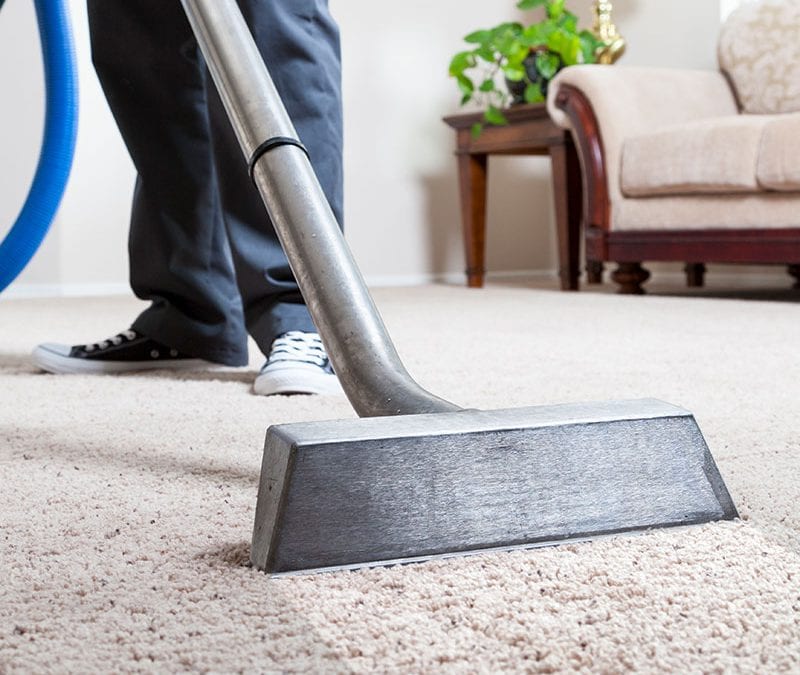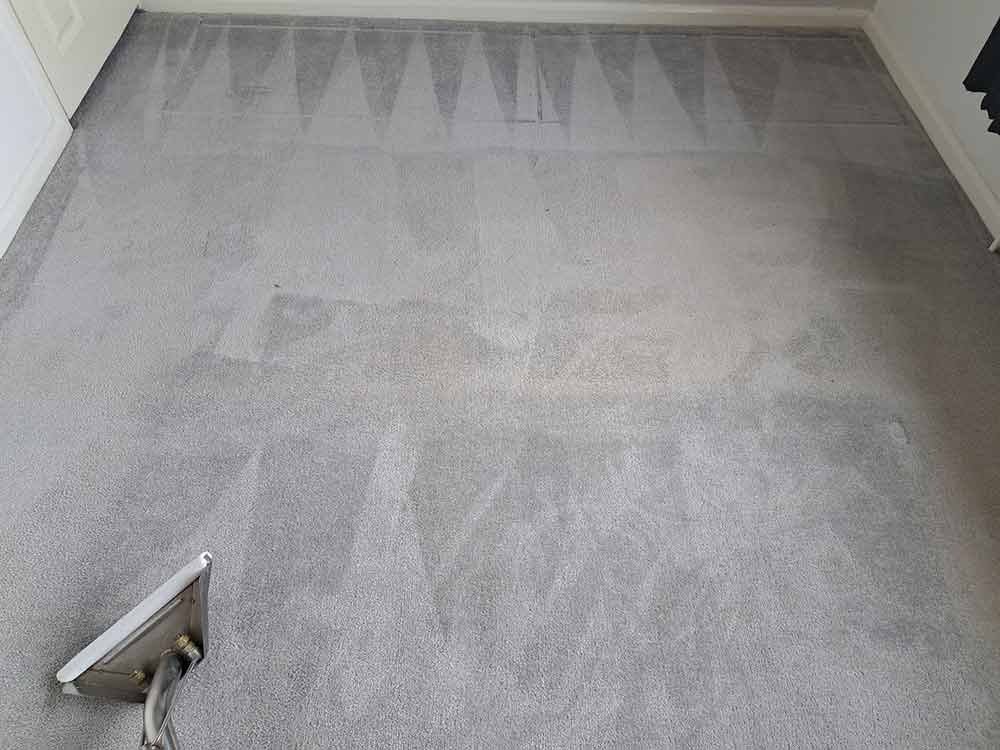When you think about carpet cleaning in busy airports, it's clear you're dealing with unique challenges. With over 2.2 million passengers each day, the sheer volume of foot traffic leads to a rapid accumulation of dirt and spills, complicating maintenance efforts. You've got to take into account not only the types of soils present but also the need for advanced cleaning technologies that won't disrupt airport operations. As you explore these issues, you'll find that the stakes are higher than they seem, revealing a complex web of factors that could surprise you.
High Traffic Challenges
Maneuvering the high traffic challenges in airports is no small feat, especially when you consider that over 2.2 million passengers pass through U.S. airports every day. This heavy foot traffic leads to significant soil accumulation, primarily tracked in from outside.
The constant influx of passengers necessitates a rigorous daily cleaning routine to mitigate the impact of dirt and germs. Industrial-grade vacuums and sweepers become essential tools in high-traffic areas, guaranteeing surfaces remain clean and safe.
You must also pay special attention to frequently touched surfaces like doorknobs and elevator buttons, which require regular sanitization. Entryway matting systems play a vital role in this process, capturing soil and moisture before it spreads throughout the terminal.
By effectively targeting dirt at entryways, you can preserve overall cleanliness and reduce maintenance demands. It's important to maintain airport flooring to prevent slips and falls, especially in high-traffic zones.
Regular carpet cleaning not only keeps the floors looking good but also helps improve air quality by removing trapped pathogens. Consistent deep cleaning and maintenance are essential to address the challenges posed by high foot traffic and guarantee a safe, welcoming environment for all travelers. Additionally, regular cleaning helps to improve indoor air quality, which is crucial for the health and comfort of passengers and staff alike.
Equipment and Technology Needs
How can airports effectively manage their carpet cleaning needs amidst constant foot traffic? The answer lies in investing in advanced machinery that enhances cleaning efficiency without disrupting operations. Utilizing low-moisture technology guarantees quick drying and minimizes residue, making it ideal for busy environments. Lightweight machines boost employee morale and efficiency, while interim maintenance systems, like Whittaker's Smart Care TRIO, comply with manufacturer recommendations. Furthermore, the adoption of eco-friendly practices in carpet cleaning can promote healthier living environments for both staff and travelers.
Here's a comparison of essential equipment:
| Equipment Type | Key Feature | Benefit |
|---|---|---|
| Low-Moisture Machines | No residue left | Reduces maintenance frequency |
| Ride-On Extractors | Dual-purpose cleaning | Maximizes productivity |
| Autonomous Robots | Scalable and efficient | Saves labor costs |
| ReadySpace Technology | Rapid drying | Minimizes mold risk |
Carpet Maintenance Strategies
Maintaining carpets in airports requires a strategic approach to guarantee cleanliness and longevity despite high foot traffic. Implementing effective preventive measures is fundamental. Start by installing walk-off systems at entrances to minimize dirt entering the facility. Daily cleaning of these materials can capture up to 80% of soil and moisture.
Choosing vacuums with the Carpet and Rug Institute's Seal of Approval guarantees peak performance, especially in high-traffic areas, which should be vacuumed daily.
Routine maintenance is essential. Frequent vacuuming removes dry soil, while identifying high-traffic zones enables you to adjust cleaning schedules accordingly. Use HEPA filters to trap smaller particles and allergens effectively. Promptly addressing spots prevents permanent stains, making immediate action critical.
For interim cleaning, low-moisture encapsulation can restore heavily trafficked areas that regular vacuuming can't manage. Operate equipment slowly for maximum effectiveness and make multiple passes if necessary.
Finally, plan for restorative deep cleaning at least once or twice a year. Hot water extraction is effective, but verify carpets dry completely within 24 hours to prevent moisture buildup and maintain a clean, welcoming environment. Additionally, implementing regular cleaning can prevent long-term damage to carpets, ensuring they remain in optimal condition.
Hygiene and Sanitation Concerns
Airports are bustling hubs where hygiene and sanitation become paramount due to the constant flow of passengers. The high foot traffic increases the risk of pathogens spreading on carpets, making regular deep cleaning indispensable. Carpets trap airborne pathogens, which can be stirred up as passengers walk across them, posing significant health risks. Contaminated carpets can harbor bacteria and viruses, necessitating adherence to strict hygiene standards to guarantee safety.
Using traditional cleaning methods may expose you to harsh chemicals that harm both human health and the environment. As a result, opting for eco-friendly cleaning solutions is essential for maintaining cleanliness while supporting pathogen prevention. Different carpet fibers require specific techniques to avoid damage, so hiring professionals guarantees the right methods are employed. Furthermore, professional cleaning ensures effective stain removal and carpet preservation, which is crucial in a high-traffic environment like an airport.
Consistent vacuuming and periodic deep cleaning are fundamental for preserving the lifespan of airport carpets and preventing the buildup of hazardous substances.
Additionally, implementing safety measures for cleaning staff, such as using protective gear and following protocols, minimizes exposure to contaminants. In this way, you can maintain a healthy environment for both passengers and staff while upholding high hygiene standards.
Cost and Efficiency Factors
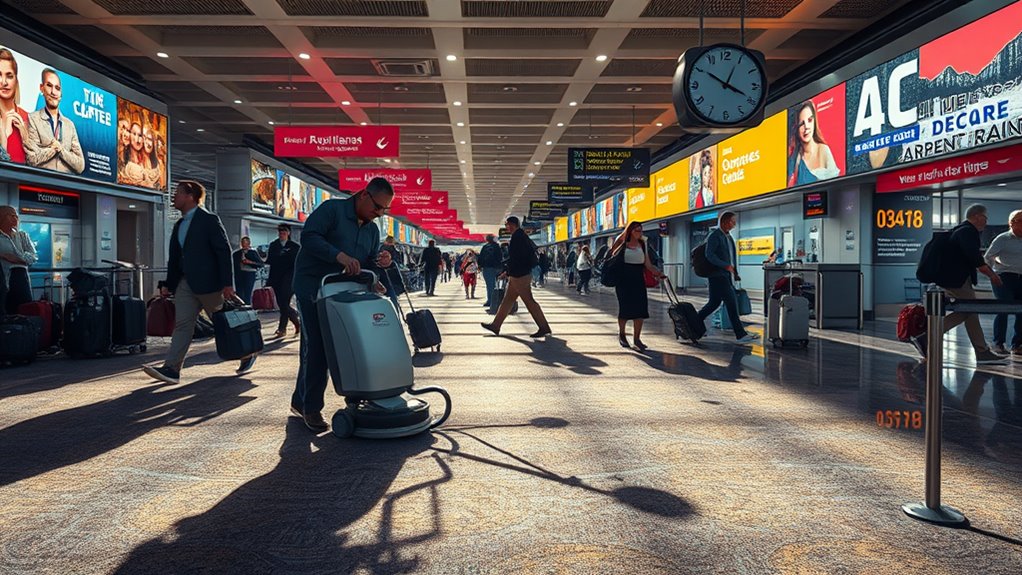
Balancing cost and efficiency in airport carpet cleaning requires a strategic approach to guarantee both cleanliness and budget adherence.
You need to take into account various cost factors, such as room size and carpet type. Larger areas often require more cleaning solutions and labor, while certain materials like wool or Berber may need pre-treatments, driving up costs. The condition of the carpet also plays a significant role; heavily stained carpets require additional resources, increasing your expenses.
To achieve cost optimization, implementing efficiency improvements is essential. Utilizing quick-drying methods reduces downtime, allowing busy airport spaces to be restored faster. Professional services guarantee effective cleaning with minimal disruption, ensuring that high-quality solutions are applied.
Regular maintenance, including vacuuming and periodic deep cleaning, can extend carpet lifespan and mitigate future costs. Additionally, adopting eco-friendly solutions not only benefits the environment but can also extend the longevity of your carpets by up to 30%.
Engaging professional services guarantees effective cleaning with minimal disruption, while innovative technologies, like detergent-free cleaners, enhance maintenance efficiency.
Passenger Experience Expectations
Cleanliness plays an essential role in shaping passenger experience, influencing everything from first impressions to overall satisfaction during their journey.
When you step into an airport, your perception of cleanliness can notably impact your travel anxiety and mood. To enhance this experience, consider these key aspects:
- Daily and Deep Cleaning: Regular cleaning, including thorough deep cleans, is critical for maintaining hygiene and addressing spills. This guarantees high cleanliness perceptions among passengers.
- Health Implications: Clean airports contribute to healthier air quality, reducing the risk of germs and bacteria spreading in high-traffic areas. This directly affects passenger health and helps mitigate the risks of neglecting carpet maintenance.
- Continuous Feedback Loop: Listening to passenger feedback is essential. It helps identify cleanliness concerns and informs improvements in cleaning strategies, guaranteeing that expectations are consistently met.
Soil Types and Contaminants
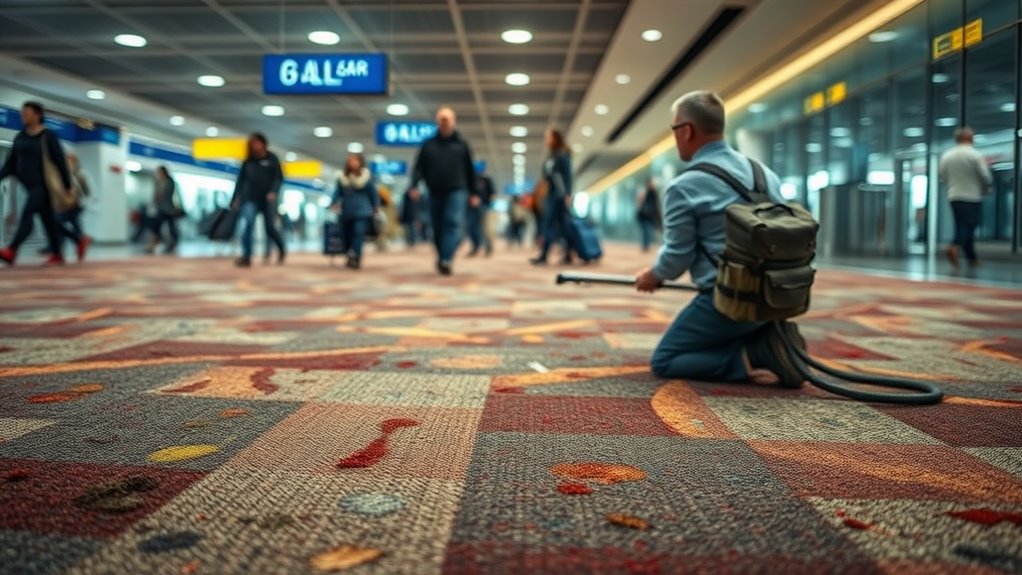
When you walk through an airport, you mightn't realize the variety of soils and contaminants that accumulate on the carpets beneath your feet. The soil composition includes gritty materials like sand and clay, which can be abrasive and damaging. Additionally, natural fibers such as lint and organic soils from food spills and oils contribute to the mess. Biological contaminants like human hair and dust mites are also prevalent, making effective cleaning necessary.
Contamination sources are numerous in this bustling environment. Foot traffic is a primary contributor, as people track in soils from outside. Outdoor elements like grit and sand, along with internal spills from food and beverages, exacerbate the issue. Even animals and wind can introduce unwanted materials.
Removing these diverse soil types poses challenges. Insoluble soils often resist traditional cleaning methods, requiring specialized techniques and chemicals. Natural cleaners like vinegar and baking soda can be effective in addressing some of these issues.
It's vital to choose appropriate cleaning agents to avoid damaging carpet fibers while ensuring health and safety. Understanding these soil types and contamination sources helps you appreciate the complexities of maintaining clean, safe carpets in busy airports, highlighting the need for effective cleaning strategies.
Scheduling Cleaning Operations
Effective scheduling of cleaning operations in airports is essential for maintaining a pristine environment amidst constant foot traffic. To achieve this, you must consider several factors that contribute to operational flexibility and cleaning frequency.
- Traffic Patterns: Identify high-traffic zones, such as corridors, lobbies, and elevators, that require daily vacuuming. In contrast, areas like offices may only need weekly attention.
- Off-Peak Scheduling: Schedule deep cleaning during off-peak hours to minimize disruption to travelers and airport operations. This guarantees that cleaning processes are efficient and thorough without hindering the passenger experience.
- Utilizing Technology: Leverage advanced machinery and data analytics to streamline operations. Tools like autonomous floor cleaning robots can cover large areas effectively, allowing for flexible scheduling that adapts to cleaning needs based on real-time data. Additionally, employing specialized equipment ensures that deep cleaning is done thoroughly to achieve superior results.
Training Cleaning Personnel
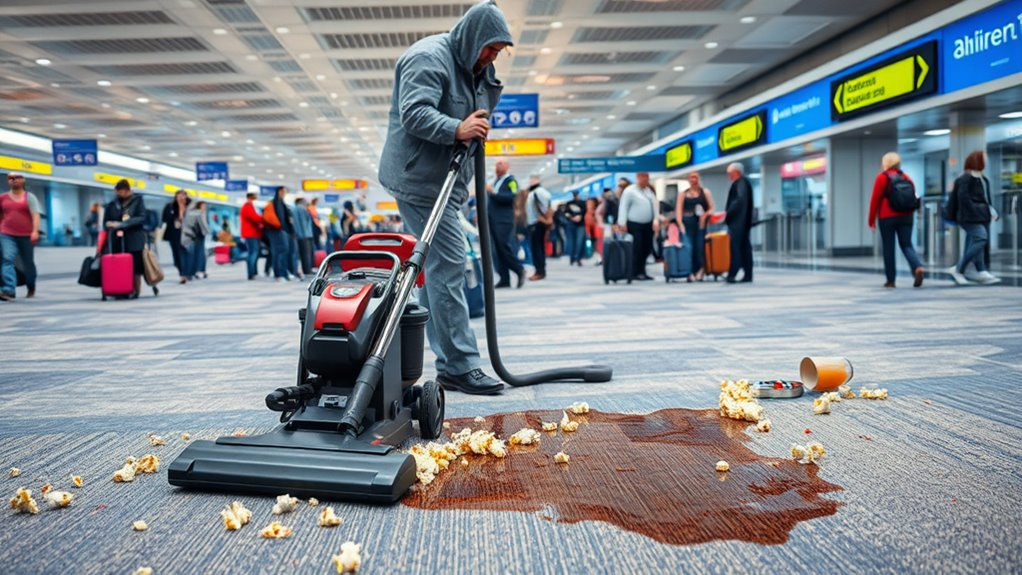
Training cleaning personnel is essential for maintaining the high standards required in airport environments. You need a thorough training curriculum that covers hazard identification, manual handling techniques, and the importance of dynamic assessment throughout the workday.
Emphasizing non-toxic cleaning agents and low VOC products is critical, as is integrating incident reporting protocols into your training techniques.
Key skills include safe lifting practices, understanding personal limitations, and recognizing common injuries and risk factors. Housekeeping practices should aim to avoid hazards, with periodic training reviews to evaluate effectiveness.
Certification programs play a significant role in enhancing your team's expertise. Courses like the British Certificate in Aviation (Aircraft Cleaning) and IICRC certification for carpet cleaning guarantee your staff is well-equipped. Additionally, understanding the importance of proper ventilation after using cleaning chemicals can further ensure the safety of both personnel and passengers.
Consider the Value Added Service Technician (VAST) course for improving customer relationships.
Continuous education is essential. Offer periodic refresher courses to reinforce learned techniques and keep your personnel updated on emerging trends.
Consulting with health and safety representatives and evaluating manual handling injuries will help refine your training practices, guaranteeing your team remains effective and safe in a busy airport setting.
Innovations in Carpet Care
With a well-trained cleaning team in place, the focus can shift to innovations in carpet care that enhance efficiency and effectiveness in airport environments.
These advancements not only streamline cleaning processes but also emphasize sustainable practices, guaranteeing longevity and cleanliness.
1. Low-Moisture Encapsulation: This method utilizes safe chemistry to crystallize dirt, allowing for quick drying and minimal downtime, making it ideal for high-traffic airport areas.
It's even recommended by carpet manufacturers for extending lifespan.
2. Robotic Cleaning Systems: Autonomous robots, like the Neo Floor Cleaner, navigate large spaces autonomously, detecting dirt without human help.
Their swappable batteries guarantee extended cleaning sessions, keeping carpets pristine between deep cleanings.
3. Eco-Friendly Cleaning Solutions: The shift toward biodegradable, non-toxic products reduces water consumption while maintaining indoor air quality.
These solutions are gentle on carpets and support sustainable practices. The integration of advanced cleaning technologies ensures optimal stain removal and improved overall performance in bustling airport settings.
Integrating these innovations with regular maintenance routines guarantees carpets remain in excellent condition, reducing the need for frequent replacements and ultimately saving costs.
Embracing advanced materials and technologies is essential for effective carpet care in busy airports.
Frequently Asked Questions
How Do Weather Conditions Affect Carpet Cleanliness in Airports?
Weather conditions greatly impact carpet cleanliness in airports. You need to prioritize carpet maintenance, as moisture increases soiling and bacteria, while dry air boosts dust accumulation. Regular cleaning adapts to weather changes, ensuring ideal carpet hygiene.
What Types of Carpets Are Best for High-Traffic Airport Areas?
For high-traffic airport areas, you'll want commercial grade fibers like Triexta and Nylon. Their stain resistant treatments guarantee durability and easy maintenance, helping carpets withstand heavy foot traffic while maintaining a clean, professional appearance.
How Can Airports Minimize Carpet Wear and Tear Over Time?
Imagine a carpet thriving amidst foot traffic; you can minimize wear and tear by implementing preventive maintenance and using durable materials. Focus on regular vacuuming, spot removal, and deep cleaning to extend its lifespan effectively.
What Role Do Passengers Play in Maintaining Carpet Cleanliness?
You play an essential role in maintaining carpet cleanliness through passenger awareness and cleanliness habits. By being mindful of spills and dirt, you help create a more welcoming environment, positively influencing overall airport perceptions and experiences.
Are There Eco-Friendly Cleaning Solutions Suitable for Airport Carpets?
Yes, you can use biodegradable cleaners for airport carpets. These sustainable practices not only minimize environmental impact but also guarantee effective cleaning, promoting a healthier atmosphere for both passengers and staff while adhering to essential regulations.
Conclusion
In the bustling airport, carpets are like silent sentinels, absorbing the stories of travelers while battling relentless grime. To keep these vibrant fibers healthy, you need innovative cleaning strategies and skilled personnel who wield advanced tools like knights with shining armor. By addressing hygiene concerns and scheduling effectively, you can guarantee a welcoming environment for passengers. The journey of carpet care mirrors the flow of travel itself—dynamic, challenging, yet essential for a smooth experience in the skies.

